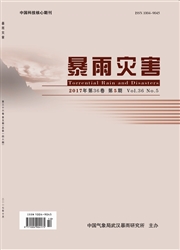

 中文摘要:
中文摘要:
以华中区域中尺度业务模式WRF3D为平台,使用MYJ、ACM2边界层方案完成2012年7月的批量敏感试验,重点研究不同边界层方案对中国中东部地区夏季降水预报的影响。与高分辨率降水实况相比,白天(夜晚)的降水预报差异主要由降水面积(降水强度)决定,以MYJ方案在白天预报过大降水面积和ACM2方案在夜晚预报过强降水最为突出。对模式结果的进一步诊断表明,MYJ方案下的大面积降水由白天大范围启动积云对流方案形成隐式降水造成,而ACM2方案下的强降水与夜间更易激发云微物理方案形成过强显式降水有关。在此基础上,从边界层方案设计原理出发,指出不同方案下的垂直混合强度是导致降水预报差异的根本原因。
 英文摘要:
英文摘要:
The impact on summer precipitation forecast in the central eastern China has been studied by using two different planetary boundary layer schemes (MYJ and ACM2) in the WRF3D model. Comparing to high resolution precipitation observations, results from sensitivity experiments in July 2012 show that the differences in precipitation forecast in the daytime (nighttime) are mainly determined by the rainfall area (rainfall intensity). Especially, the forecasts with the MYJ scheme give too large rainfall area in the daytime, and the forecasts with the ACM2 scheme give too strong rainfall intensity in the nighttime. Further diagnosis shows that the erroneously large rainfall area with the MYJ scheme is due to the trigger of cumulus convection scheme to produce large-scale implicit rainfall in the daytime, while it is more likely to provoke the cloud microphysics scheme to produce overly stronger explicit rainfall in the nighttime by using the ACM2 scheme. Finally, based on the different assumptions in each planetary boundary layer scheme, it is pointed out that the vertical mixing strength is the root cause of the differences in rainfall forecast.
 同期刊论文项目
同期刊论文项目
 同项目期刊论文
同项目期刊论文
 期刊信息
期刊信息
